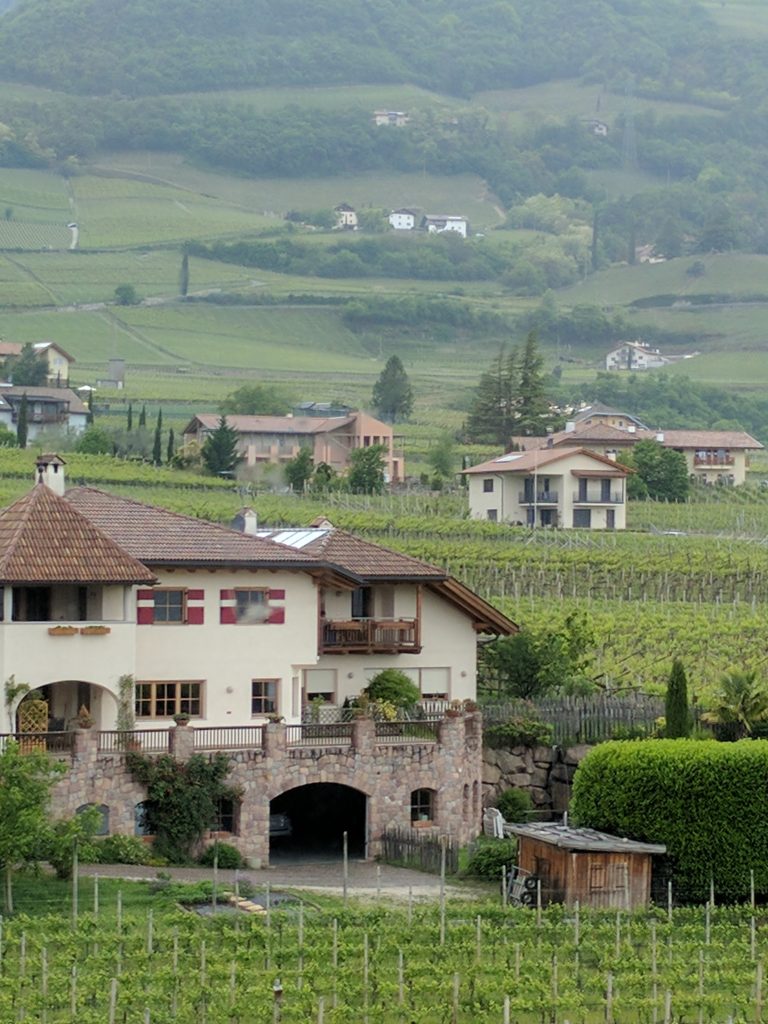
Upon arrival in the Italian region of Alto Adige, the scenery and topography make a powerful statement. Greeted by snow-topped peaks, verdant mountains and Swiss chalet-style architecture, you would half expect Julie Andrews to suddenly appear and belt out songs from the Sound of Music. This northern-most province borders both Austria and Switzerland and was under Austrian rule until 1919. And, to this day, both Italian and a dialect of German are the official languages, with over two-thirds of the population speaking German as their native tongue.
Rather, instead of hearing from Julie or the von Trapp family, the hills of South Tyrol (Südtirol) are alive with the sound of viticulture. And, despite its limited size (when considered separate from Trentino, Alto Adige is the smallest of Italy’s 20 regions), 98% of its production is at the Protected Designation of Origin level – the most of any Italian region!
With the Dolomites to the East and the Alps to the north, these mountain ranges shelter the area from the cold forces of the North and trap air from the lakes and limit the annual rainfall, resulting in 300 sunny days per year. Conversely, the strong Ora winds coming off nearby Lake Garda help to temper the summer heat. Given this duality of cooling and warming influences, Alto Adige is home to both Mediterranean and Alpine botany along with vineyards and apple orchards.
Not surprisingly, given these climatic conditions, the region is highly regarded for its white wines, which account for 60% of regional production. However, it also boasts some spectacular reds as well. In general, the steep slopes at the highest elevations (820 to 2800 feet) are given over to white varieties, while the lower, rolling hills are planted to reds. The high-altitude vineyards benefit especially from the area’s wide diurnal shift, permitting the grapes to ripen fully, while retaining high levels of acidity. Moreover, the region’s diverse soils, which include limestone, quartz and volcanic porphyry, further retain acidity and add minerality to the wines.
Wine glasses are given over to over 20 different varieties, with many indigenous grapes taking center stage. In addition to Pinot Grigio and Gewurztraminer, the white Kerner, an aromatic hybrid of Trollinger and Riesling, has been widely grown in the area. Among the reds, Lagrein, a descendant of Teroldego has strong roots in Bolzano and stands out for its tannic structure.
Beyond the glass, the mix of German and Italian cultures extends to the kitchen where speck, knödel dumplings, brown breads and fruit strudels make their way to the plate. But, regardless of what you have on your plate, these two wines should be equally welcome in your home.
Strasserhof Kerner 2017 Valle Isarco Alto Adige, Italy
This wine offers up a limited fruit profile on the nose and palate, but makes up for it in fresh acidity, beautiful minerality, lean body and long length.
Castelfeder Burgum Novum Lagrein Riserva 2014, Alto Adige, Italy
Inky, deep ruby in color, this wine displayed a brooding, intense nose of wet leaves, plum and dried red fruit, giving way to a dry, full-bodied palate, with bright acidity, medium+ ripe and resolved tannins, and long length with a smoky finish.
